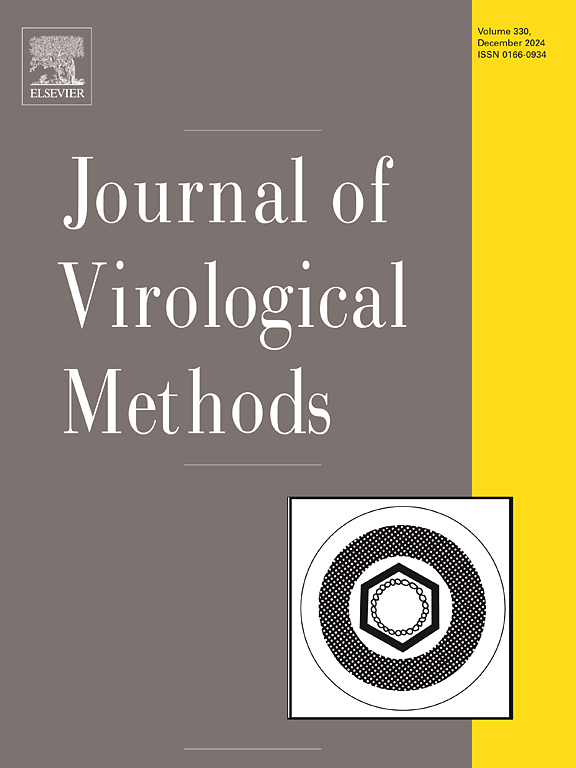Influence of virus analytical methods on the estimation of virus reductions by ultrafiltration
IF 1.6
4区 医学
Q3 BIOCHEMICAL RESEARCH METHODS
引用次数: 0
Abstract
This study evaluated the influence of analytical methods on the quantitative estimation of viruses in recycled waters and their reductions by an ultrafiltration (UF) engineering-scale system. Adenoviruses, crAssphage, Pepper mild mottle virus (PMMoV), culturable male-specific and somatic coliphages selected through a comparative quantitative analysis were evaluated in UF feed and UF permeate using a combination of analytical methods for virus concentration and absolute quantification of virus genomes and infectious coliphages by digital PCR and plaque assays, respectively. Both methods of virus concentration, centrifugal ultrafiltration and the InnovaPrep CP Select™ Concentrating Pipette (CP), demonstrated similar performance for the recovery of viruses from UF feed and UF permeate, however the CP approach allowed more rapid sample filtration than centrifugal ultrafiltration. Procedures commonly applied for the detection of viruses in water generated different quantitative outcomes that were influenced by the type of virus and other natural sources of variation associated with UF feed and UF permeate water. These quantitative outcomes in virus measurements led to highly variable estimations of virus reductions ranging from no apparent reduction to a maximum of 2-log10. These results indicate that more accurate estimations of virus levels and reductions in water purification processes require adjustments in analytical procedures under the wide variety of water characteristics associated with each stage of treatment. A thorough understanding of the interactions between structural features of natural occurring viruses in recycled waters and water quality characteristics is crucial for improving virus recoveries and for the assessment of membrane-based treatment systems as barriers against microbial targets of environmental and public health concern.
病毒分析方法对超滤估计病毒还原量的影响
本研究评价了各种分析方法对循环水中病毒的定量估计及其在超滤(UF)工程规模系统中的还原效果的影响。通过比较定量分析选择腺病毒、crAssphage、辣椒轻度斑驳病毒(PMMoV)、可培养的雄性特异性和体细胞噬菌体,分别在UF饲料和UF渗透液中使用病毒浓度分析方法和病毒基因组绝对定量分析方法和空斑分析方法对感染性噬菌体和病毒基因组进行定量分析。两种病毒浓缩方法,离心超滤和InnovaPrep CP Select™浓缩移液管(CP),在UF饲料和UF渗透液中回收病毒方面表现出相似的性能,但CP方法比离心超滤方法能够更快地过滤样品。通常用于检测水中病毒的程序会产生不同的定量结果,这些结果受到病毒类型以及与UF饲料和UF渗透水相关的其他自然变异源的影响。这些病毒测量的定量结果导致病毒减少量的高度可变估计,范围从没有明显减少到最大2-log10。这些结果表明,更准确地估计病毒水平和水净化过程中的减少,需要根据与每个处理阶段相关的各种水特性调整分析程序。全面了解循环水中自然存在的病毒的结构特征与水质特征之间的相互作用,对于提高病毒回收率和评估膜处理系统作为环境和公共卫生关注的微生物目标的屏障至关重要。
本文章由计算机程序翻译,如有差异,请以英文原文为准。
求助全文
约1分钟内获得全文
求助全文
来源期刊
CiteScore
5.80
自引率
0.00%
发文量
209
审稿时长
41 days
期刊介绍:
The Journal of Virological Methods focuses on original, high quality research papers that describe novel and comprehensively tested methods which enhance human, animal, plant, bacterial or environmental virology and prions research and discovery.
The methods may include, but not limited to, the study of:
Viral components and morphology-
Virus isolation, propagation and development of viral vectors-
Viral pathogenesis, oncogenesis, vaccines and antivirals-
Virus replication, host-pathogen interactions and responses-
Virus transmission, prevention, control and treatment-
Viral metagenomics and virome-
Virus ecology, adaption and evolution-
Applied virology such as nanotechnology-
Viral diagnosis with novelty and comprehensive evaluation.
We seek articles, systematic reviews, meta-analyses and laboratory protocols that include comprehensive technical details with statistical confirmations that provide validations against current best practice, international standards or quality assurance programs and which advance knowledge in virology leading to improved medical, veterinary or agricultural practices and management.

 求助内容:
求助内容: 应助结果提醒方式:
应助结果提醒方式:


